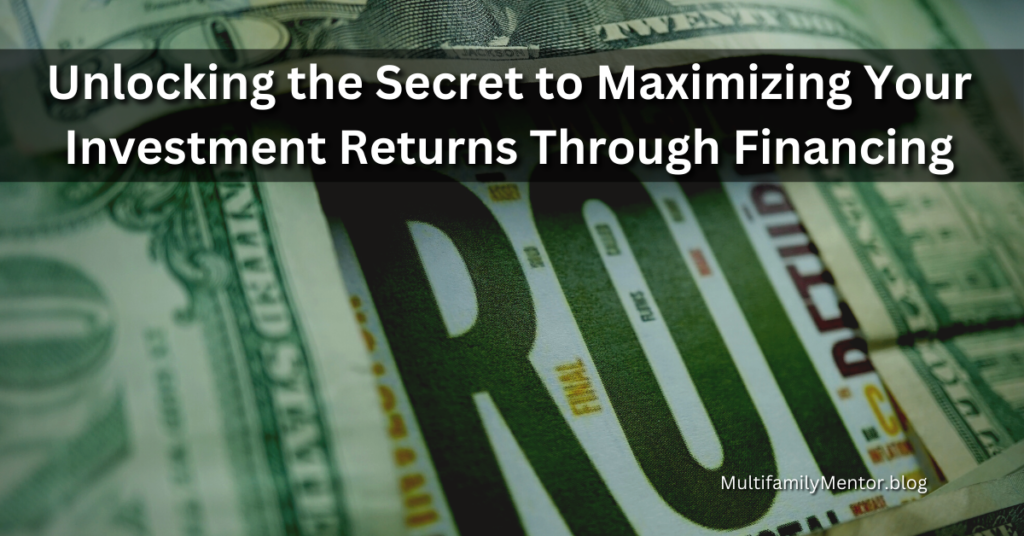Discover the secrets to achieving maximum ROI through financing structures. Read our guide on how to structure your financing for maximum return on investment.
Executive Summary
Making investments can be difficult, especially when it comes to funding them. You can increase your return on investment by structuring your finance properly. The finest techniques for arranging your finance will be covered in this post, including selecting the appropriate source of funding, comprehending the dangers and advantages, and honing your investing approach.
Introduction
Regardless of your level of experience, organizing your finance is essential to the success of your investments. You may decrease risk, boost returns, and accomplish your investment goals with the help of the appropriate financing arrangement. The top five subtopics to assist you plan your finance for the greatest return on investment are covered in this article.
Finding the Proper Kind of Funding
Your investments' success depends on choosing the correct kind of finance. While selecting your financing, keep the following in mind:
- Interest rates: Because different financing options have varied interest rates, your returns may be significantly impacted. Ensure that you compare rates and select the financing with the most affordable cost.
- Collateral requirements: Certain forms of financing call for assets or property to serve as collateral for the loan. Make careful to select financing that you can rely on and that has collateral you can live without losing.
- Loan terms: Various financing options have varied loan terms, such as balloon payments and payback schedules. Make sure the funding you choose has terms that suit your investment philosophy.
Understanding the Advantages and Risks
Any investment entails both risks and rewards. These are some crucial factors to take into account when considering the advantages and dangers of your investments:
- Market risk: Investments are subject to market risk, which means that your investment's value may change depending on the state of the market. Be sure to select investments that fit your level of risk tolerance.
- Liquidity risk: Certain investments could be challenging to sell fast, making it challenging to withdraw cash when you need it. Be sure the investments you select provide the level of liquidity you require.
- Tax ramifications: The tax consequences of various investments might significantly affect your results. Be sure the investments you select give tax benefits and fit with your investment philosophy.
Improving Your Investment Strategy
To maximize your return on investment, it is essential to optimize your investing approach. When enhancing your investment strategy, keep the following points in mind:
- Diversification: You can minimize risk and increase profits by spreading your investments across a variety of asset classes. Verify that the investments you select offer diversity across several asset classes.
- Rebalancing: Maintaining your preferred level of risk and maximizing returns can both be accomplished by periodically rebalancing your investments. Rebalancing your portfolio on a regular basis is important.
- Costs: You can increase your profits by minimizing the expenditures related to your assets. Make sure to pick investments with reasonable costs and fees.
Using leverage to boost returns is topic
Your profits on investment can be increased by using leverage, or borrowed funds. While employing leverage, keep the following points in mind:
- Leverage comes with interest rates, which can have a significant impact on your returns. Ensure that you select the leverage with the lowest rate.
- Collateral requirements: In order to secure the loan, leverage may require collateral such as real estate or other assets. Make sure the leverage you chose can be secured with collateral that you can lose on a regular basis.
- Risks: Utilizing leverage entails dangers, one of which is the possibility of losing more money than you invested. Be sure the leverage you chose is consistent with your investment philosophy and risk appetite.
Exit Procedures
To increase your earnings and reduce your risk, you should have an exit strategy. When preparing your escape strategy, keep the following points in mind:
- Time horizon: For the best results, various investments could need different time horizons. Make sure the investments you select fit the time horizon you want.
- Market conditions: Your results might be significantly impacted by the timing of your exit strategy. Be sure to monitor market conditions and modify your exit strategy as necessary.
- Tax ramifications: The tax consequences of various departure methods might have a significant impact on your returns. Choose an exit option that aligns with your investing strategy and delivers tax benefits.
Conclusion
The way you structure your finance will determine how successful your ventures are. You can maximize your return on investment and accomplish your investment goals by choosing the appropriate type of financing, comprehending the risks and rewards, optimizing your investment strategy, leveraging leverage to boost returns, and arranging your exit strategy.

